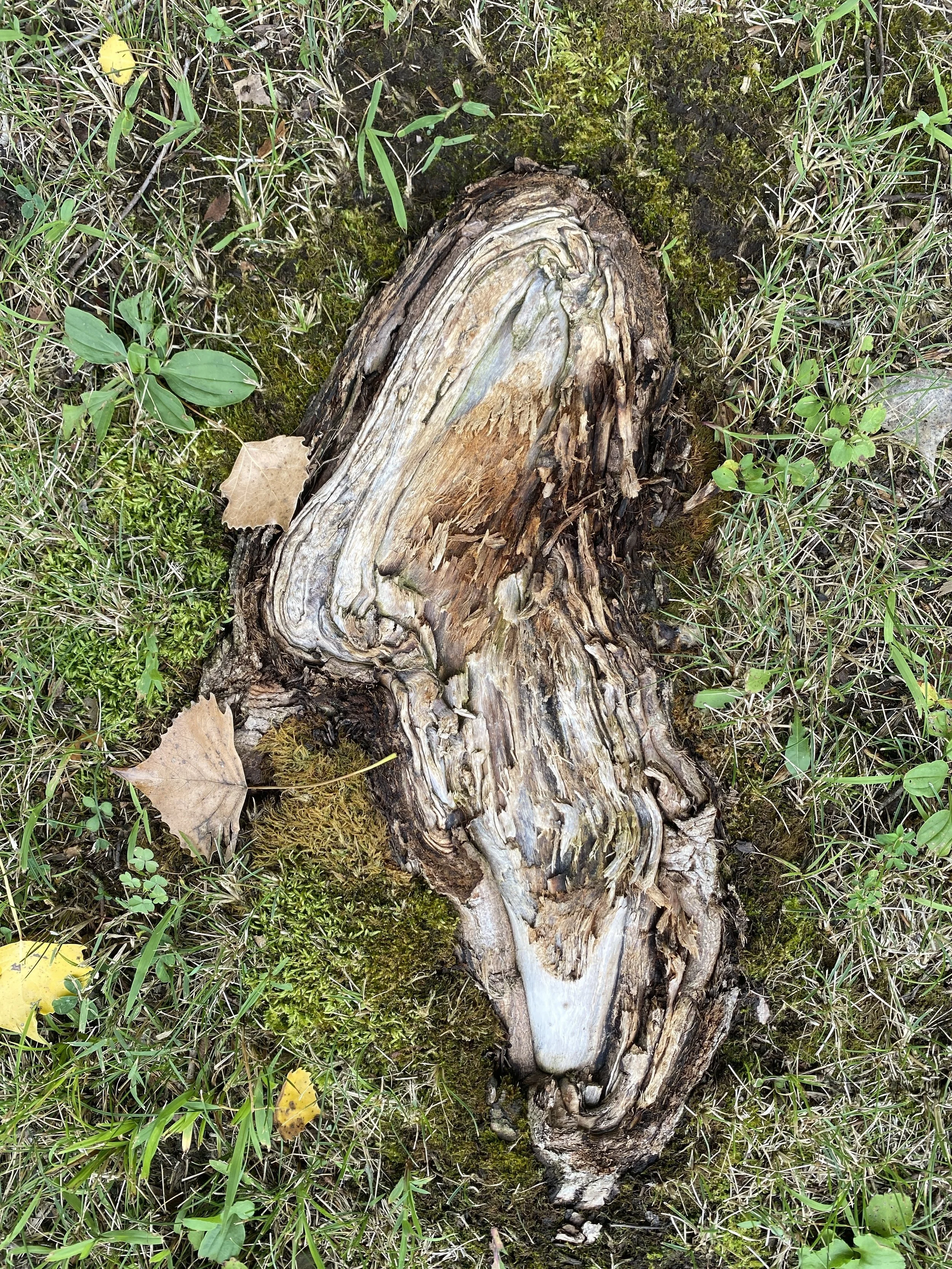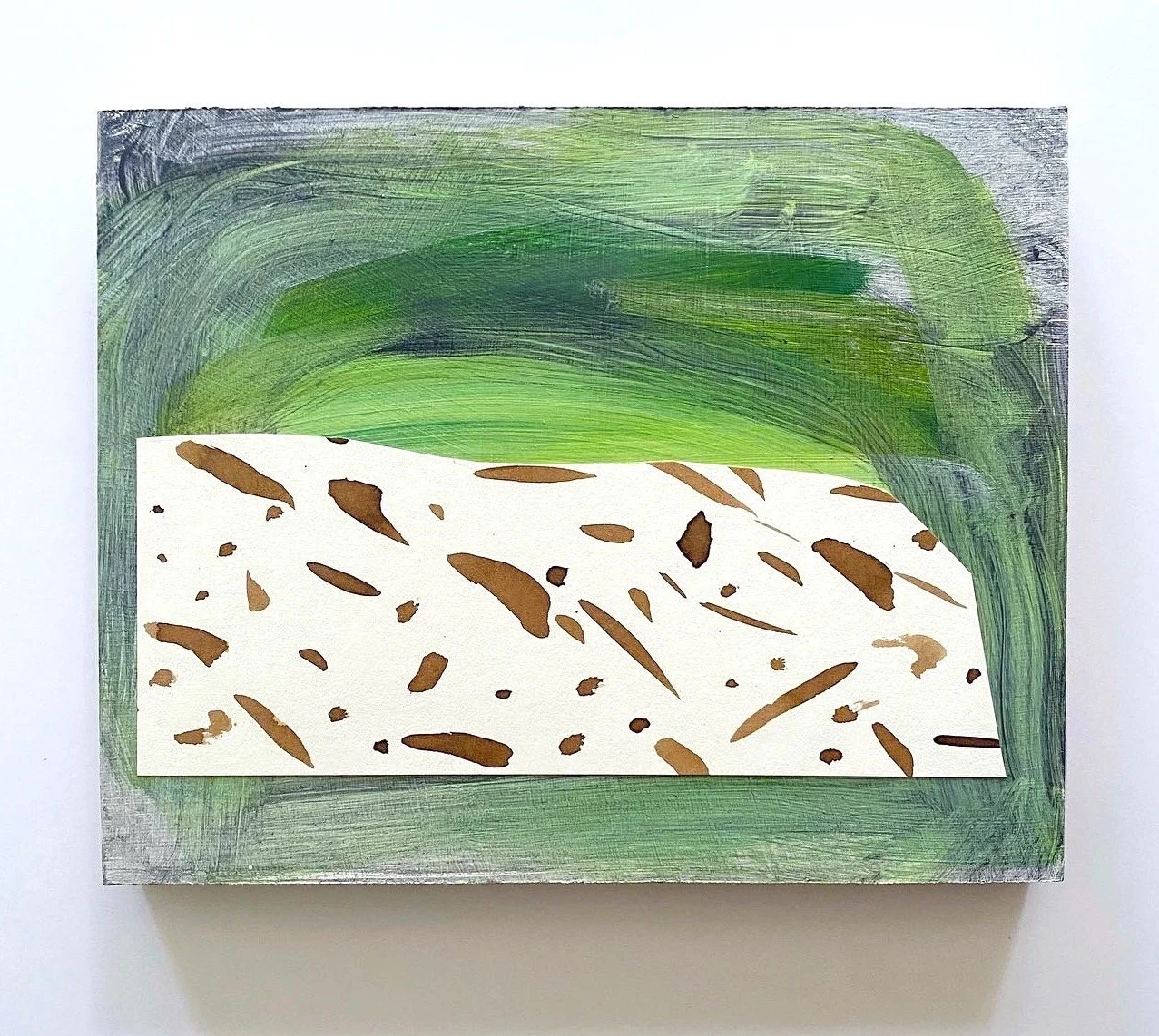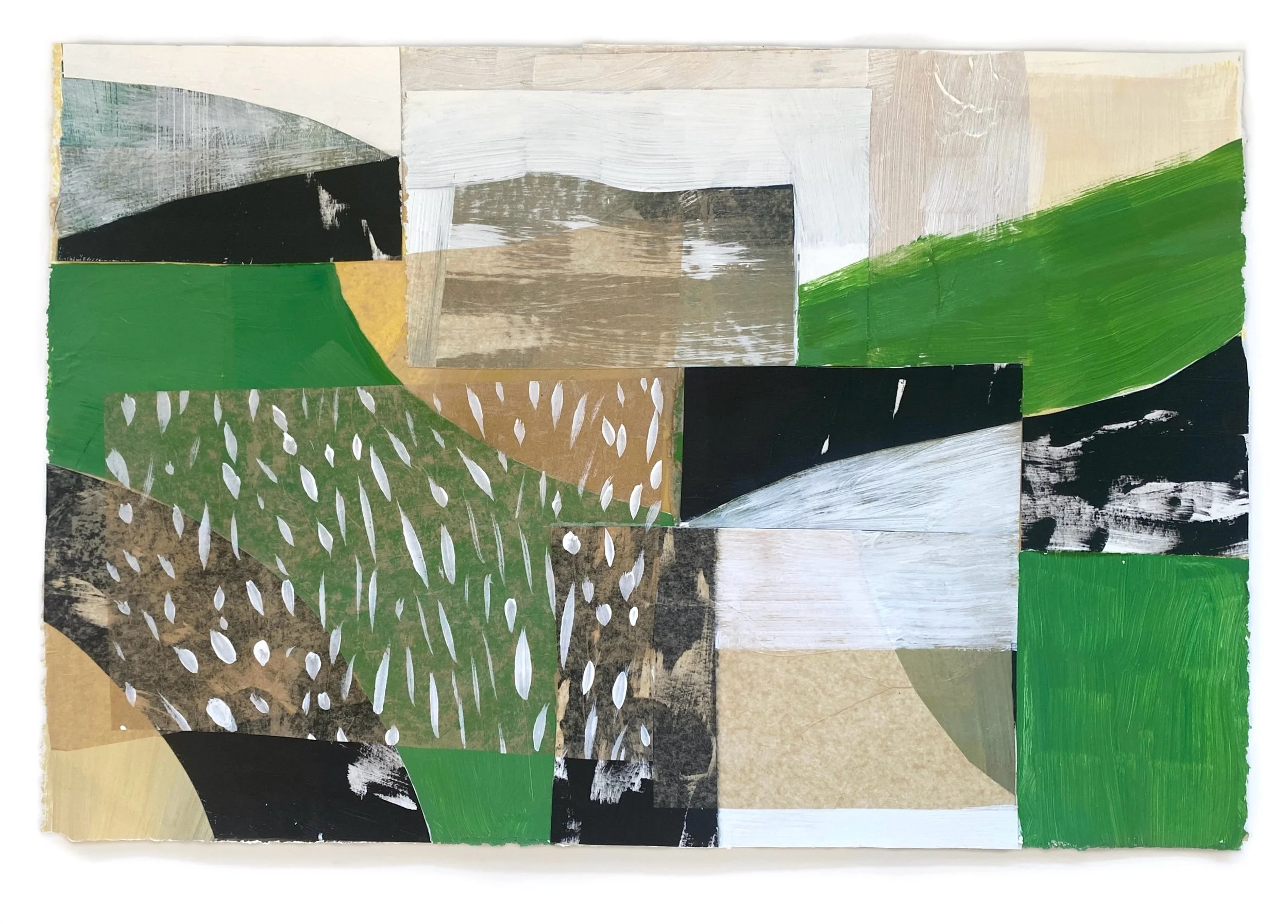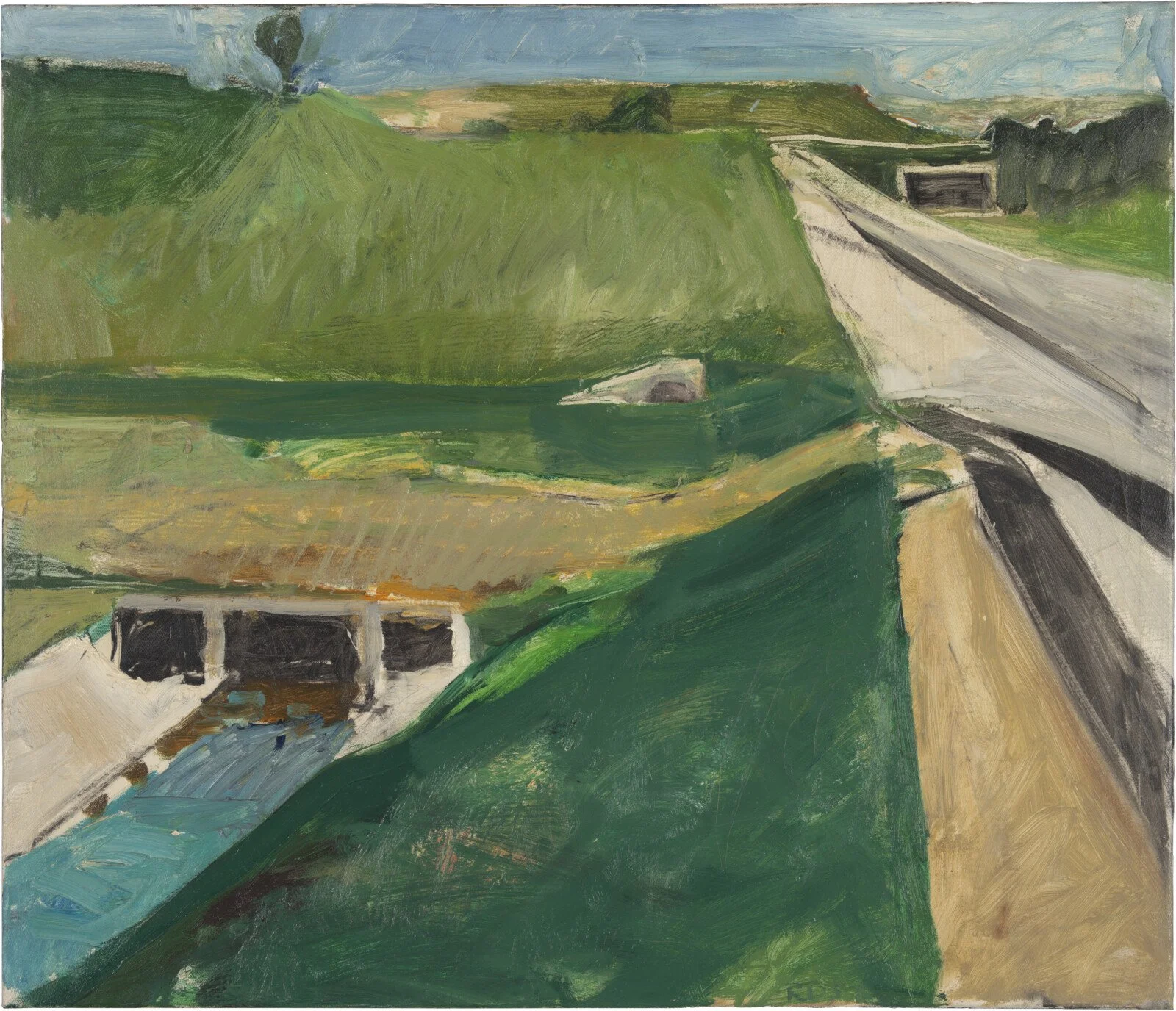“As to scenery (giving my own thought and feeling), while I know the standard claim is that Yosemite, Niagara Falls, the Upper Yellowstone and the like afford the greatest natural shows, I am not so sure but the prairies and plains, while less stunning at first sight, last longer, fill the esthetic sense fuller, precede all the rest, and make North America’s characteristic landscape.”
–Walt Whitman, Specimen Days (1879)
Planes III, 2023, mixed media on panel, 8x10 inches
I had a virtual studio visit with a curator last month, picking out works for a Fall 2025 group show in Kansas City, MO. The exhibit, As Grass Grows, is a celebration of 10 years of artist residencies at Prairieside Outpost in Matfield Green, KS—an opportunity I was grateful to have in 2023 (read about the experience here).
We ended up selecting a pair of limited-palette abstract landscapes for the exhibit, but I had to bring up the noticeable increase of greens in my work over the past 2 years. I believe this is attributable to my time in Matfield Green, and it’s an impact I’m still playing with in 2025. Like Whitman, I cannot forget the quiet visual reverberations of the plains.
The Shaded Land IV (Grass), 2025, acrylic and collage on paper, 15 x 22 inches
The irony of this timing isn’t lost on me—that after nearly 20 years of forest bathing life in the Pacific Northwest (which is carpeted in mosses, ferns, and cedars year-round), it was a return to the Kansas prairie that sparked an obsession with incorporating green hues into my paintings. Tallgrass greens are less saturated than our temperate rainforests, and less varied. But after several still mornings at the Prairieside Cottage, I remembered the planar quality of the prairie landscape and how it calls to mind the color blocks of a Diebenkorn composition.
Could be I-70, no? Richard Diebenkorn, Freeway and Aqueduct, 1957
This was not a foreign geography experience for me. Having grown up near the Konza Prairie Biological Station in Kansas, I’d expected to encounter a strong sense of familiarity with the Chase County landscape. I’d romanticized it, even: a homecoming to my roots! But of course, the topography, the light quality, even the birdsong all appeared slightly different from my own catalogued memories of place.
Though it felt less like a homecoming than I’d expected, the land, new-ish to me, was inviting and inspiring in its stillness. On the drive to the residency, I was struck by how few structures were passed in the last 30 minutes, and heartened by how much of this ecosystem remains untouched. Situated on the edge of Matfield Green (pop. 52), the overall remoteness of the cottage was powerful, and even a bit challenging to grasp. How many hours should I work each day? How should I interact with the surrounding landscape? Can you hike on the prairie? Is that person on their front porch talking to me as I walk past? Should I lock the doors at night? Will I see a cougar? For someone who is accustomed to squishing studio moments into a hectic jumble of work and family life, a week of isolated rural time is a lot to sink into.
In addition to the swaths of green burned into my mind, I brought home from this residency a revised understanding of my own creative time-scape. A generous stack of empty days was available to me, yet I didn’t put in marathon painting shifts as an artist-in-residence. I worked organically in 1-2 hour chunks, grateful to spread out in the detached studio space and also eager to listen to the landscape around me. At the conclusion of the residency, I wondered if I’d used the time well enough. I “finished” a few small panels, but also took home a lot of loose ends and process materials.
But sometimes it’s the quality of the time that matters. With such pastoral surroundings and so few distractions, the studio hours had a distilled effect. What’s more, time has compounded my efforts from that week. The collage experiments, the tallgrass walks, the coffee on the porch, the photographs of the ground—they’ve all embedded in my artist’s consciousness and coalesced into something lasting. This quiet experience at Prairieside Outpost continues to inform my work two years later, and I’ve no doubt it will continue to resonate for some time.
I’ve just secured a really different type of artist residency for September, so I’m eager to see how the two opportunities contrast with one another. Stay tuned for more details!
UPCOMING
April 19, 1-4PM - Closing reception for Environmental Ties II, Magnuson Park Gallery, Seattle
April 25, 6-9PM - Go see The Shaded Land IV (Grass) as part of Kiosk Gallery’s Spring Salon, KCMO
May 17 & 18, 12-5PM - Come visit my home studio during SPOTLIGHT NORTH Open Studio Tour, in Shoreline, Lake Forest Park, & North Seattle



